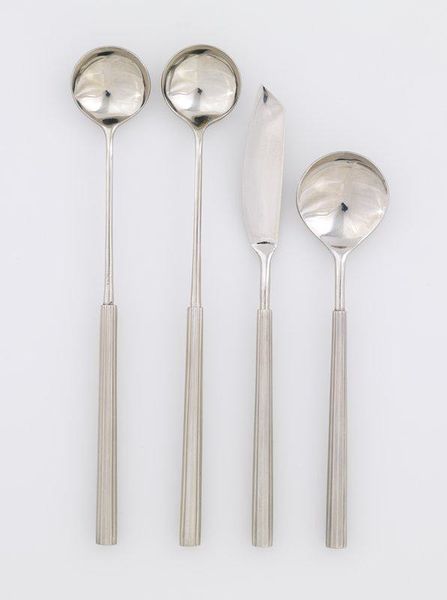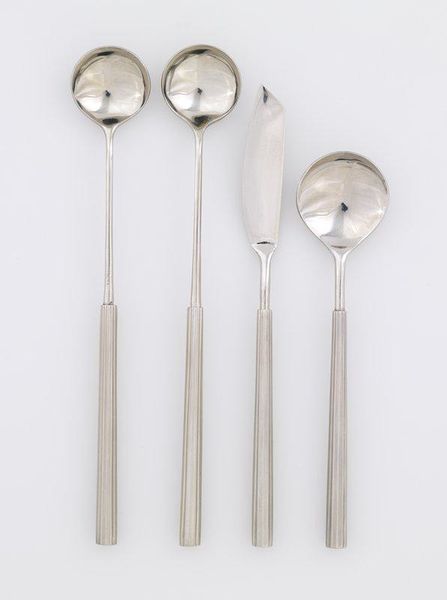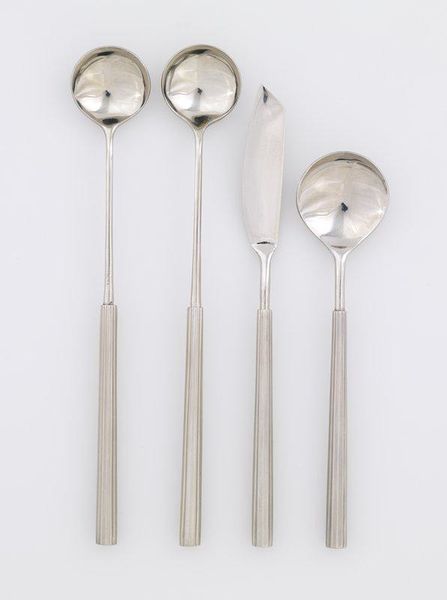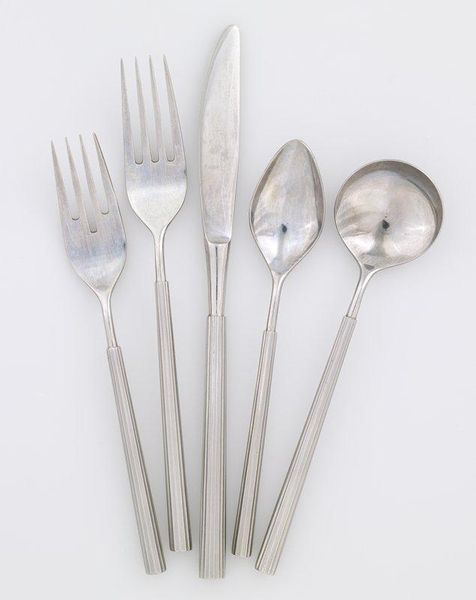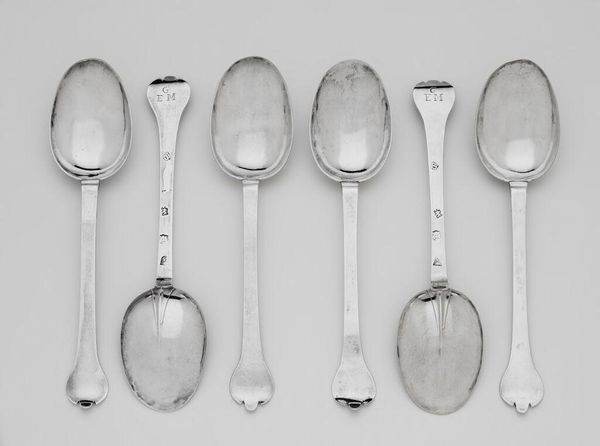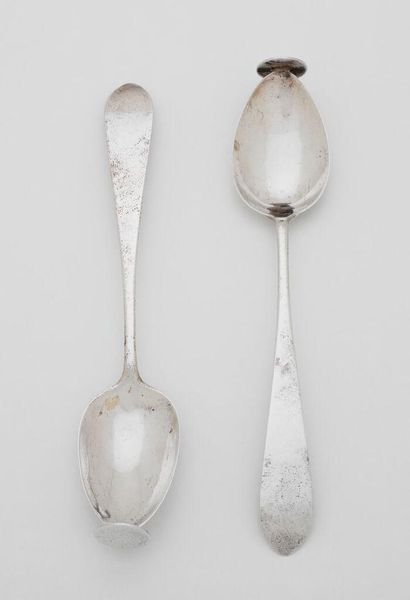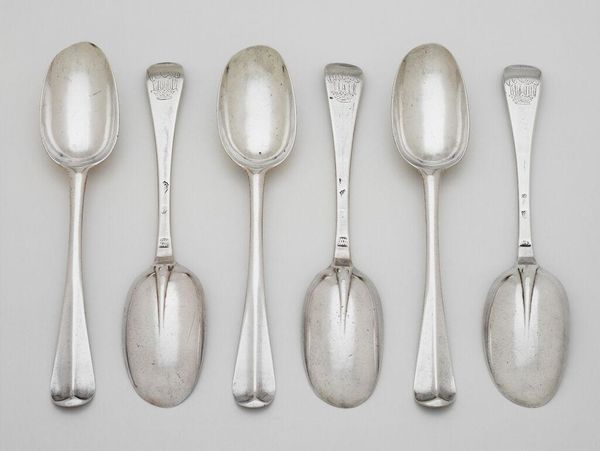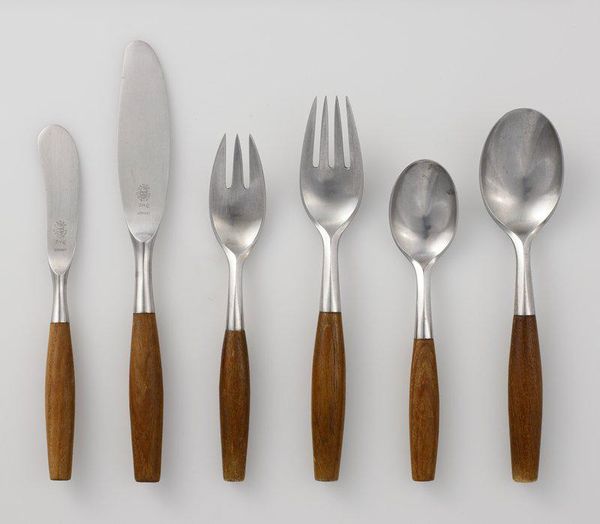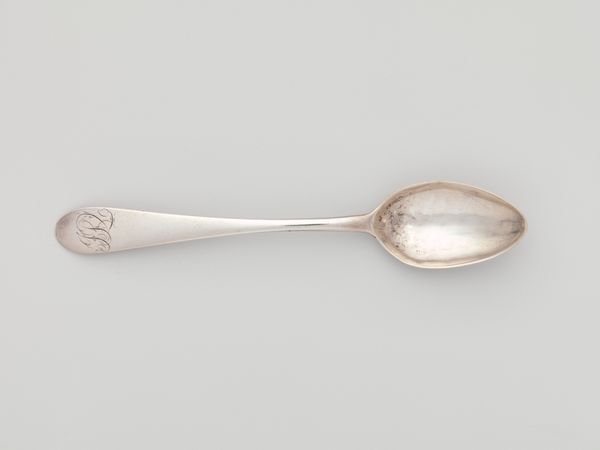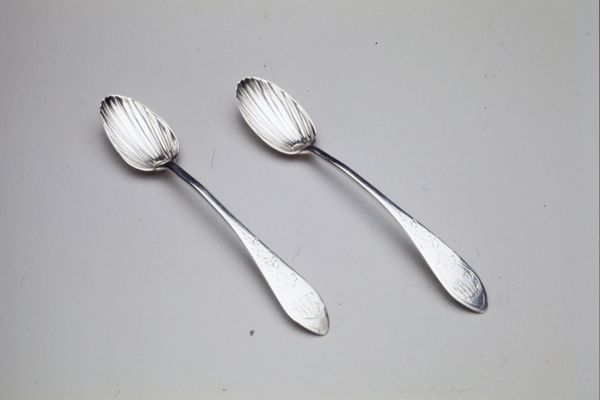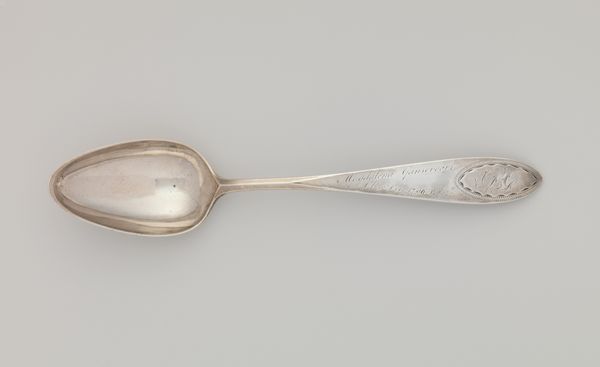
metal, photography
#
metal
#
photography
#
decorative-art
Dimensions: 5 7/8 x 1 5/16 in. (14.92 x 3.33 cm)
Copyright: No Known Copyright
Here we have four serving utensils made by Marion Weeber, I suppose sometime in the 20th century. What really grabs me is the way she’s combined the smooth, reflective surfaces of the spoon and knife heads with the textured, almost architectural handles. Up close, you can see the subtle vertical lines etched into the handles. They give the metal a tactile quality, a kind of subdued energy, and add a geometric quality that feels both modern and classic. It's a functional object, sure, but there’s a sense of craftsmanship here, a clear attention to detail. The spoon looks solid and grounded, but ready to get to work! Weeber’s background in design reminds me of Bauhaus artists like Marianne Brandt, who also brought an experimental sensibility to everyday objects. Like them, she finds beauty in simplicity and transforms the ordinary into something special. It's a reminder that art is everywhere, even in the tools we use to eat.
Comments
minneapolisinstituteofart almost 2 years ago
⋮
Marion Weeber was an independent American industrial designer who attended the progressive art school run by the Art Students League of New York. She worked for several prestigious firms including Cartier, Ekco, and Samuel Kirk & Son, but eventually opened her own design firm in Manhattan in 1939. She holds over twenty-five patents for her innovative and inventive designs. "Classic Column" is perhaps the most storied of Weeber's fifty-plus flatware designs. It was selected by the U.S. Commission for Design Excellence for the American Pavilion at the 1967 International and Universal Exposition in Montreal. Precise and polished geometric forms reflect an American industrial aesthetic, exemplifying the forward-looking image the United States wished to present to the world.
Join the conversation
Join millions of artists and users on Artera today and experience the ultimate creative platform.
